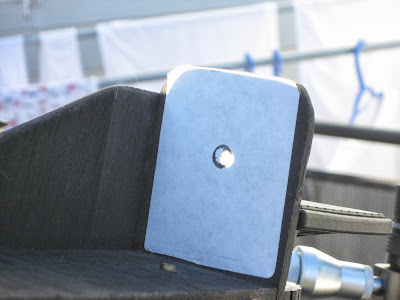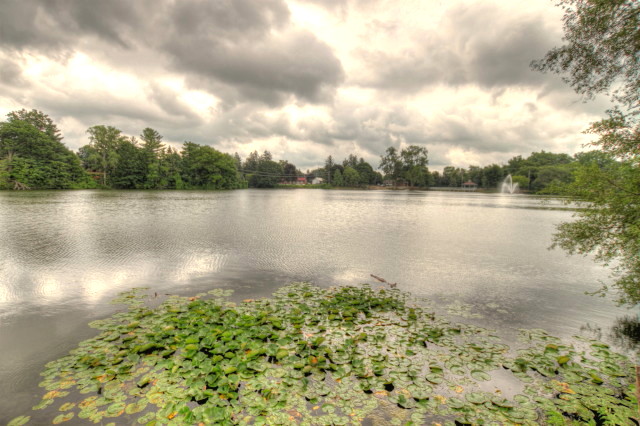Processed from a video taken by Orion SSSIV Color camera and .50 reducer in order to double the size of image.
With the Moon shining bright in the sky and turning
bright stars into dim and fuzzy point of light, the only astro-imaging that I
can do is Sun and the Moon. Of course, for the Sun you need a special filter to
protect not only your eyes but the scope as well. Another must-have accessory
is Sun finder. For filter I am using Baader full aperture solar film filter .
At first sight it looked wrong because the film is wrinkled but it has to be.
For a photographer it is quite unusual because we are used to perfectly flat
glass when you mention “filter”. But I do not argue with results.
I have designed and build my own Solar finder attached to
regular Telrad Star finder base. It is basically 2 pieces of flat thin plywood.
Piece facing Sun has a small hole drilled in center and projects sunlight onto
second piece that is 6” away and on parallel to front piece. See the picture.
To
say that I photograph Sun spots is a bit misleading because I am actually using
video camera, in my case Orion Solar System camera.
It is necessary to use video because of seeing condition viewing Sun surface,
it always moves in and out of focus due to atmosphere density between camera
and Sun.
When
the video is recorded it is processed in a frame stacking software Registax6 to sort and combine all the frames, I usually take 300 frames (20 seconds @ 15
fps). After that the final image is processed in Photoshop to add color since
all the original frames are white.
And here are photos of my setup with footnotes.
This is my Solar setup with filter Sun finder and my computer dark shelter (showing on left side).
Projector screen of Sun finder. The projection is exactly as I see it in telescope.
My JMI Motofocuser and Orion Solar System camera. With magnification that this camera provides it is a must to have a motorised focuser. If I try to focus manually the scope shakes so much that I do not see a clear image.
Laptop is absolutely essential and since I take images of Sun the screen has to be protected from sunlight. I have designed and build a shelter that can be broken down into 3 pieces for storage. Assembly takes about a minute or two and storage space requirements are negligible.
Here is one side and back/top. I have constructed it from 1/4" foam board , covered it in flat black illustration card stock, all from a Dollar Store, and edged it with a Canadian staple, the "Duct Tape". Yes, duct tape rules up here in Canada!
Processed from a video taken by Orion SSSIV Color camera without reducer.






.jpg)
.jpg)
.jpg)
.jpg)
.jpg)







.jpg)





.jpg)
.jpg)
.jpg)
.jpg)
.jpg)
.jpg)